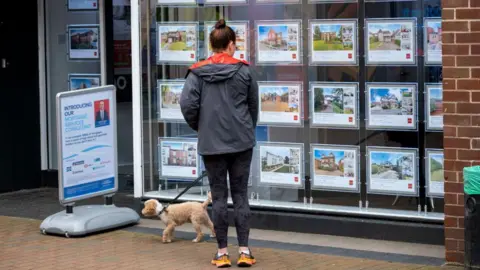In recent developments within the UK housing market, it has been reported that a significantly increased number of low-deposit mortgage options are now available, marking the highest volume seen since the financial crisis of 2008. According to data compiled by Moneyfacts, the availability of deals requiring deposits of just 5% or 10% has surged. This is particularly positive news for first-time homebuyers, even as house prices and mortgage interest rates remain elevated compared to many prior years.
As of now, first-time buyers have much more flexibility in selecting mortgage options, with 442 different products available for those able to place a 5% deposit. This represents more than double the choices offered just two years ago, where only 204 options were accessible. Furthermore, borrowers who can afford to increase their deposit to 10% can choose from 845 mortgage products. This is up from 684 options reported in April 2023. While this increase in availability is commendable, it has to be noted that average mortgage rates linger above 5% for these lower deposit options. In contrast, borrowers offering a more sizable deposit of 40% can secure rates below 5%.
The rise in mortgage availability comes amid rising living costs which have made it increasingly difficult for prospective first-time buyers to save enough for a deposit. Rachel Springall, a finance expert at Moneyfacts, acknowledged the progress as a healthy sign for those looking to gain a foothold in the housing market. However, despite the diversification of options, she pointed out that only about 6% of all current mortgage deals allow for a 5% deposit, indicating that there is still considerable room for improvement in mortgage accessibility.
In addition to the number of mortgage products available, prospective buyers must also contend with a rapidly changing housing landscape. The available data shows that homes in the UK are spending an average of only 36 days on the market before a sale is agreed upon, according to statistics from Zoopla. This indicates a robust level of competition among buyers, suggesting that homes are being sold at a quicker pace than in previous years. Sales for approximately half of the listed homes were agreed within two months.
Interestingly, the attributes of the homes also play a significant role in how quickly they sell. Two-bedroom homes, for instance, are typically sold within an average of just 23 days, whereas larger four-bedroom homes take on average an additional 15 days to reach a sale agreement. Geographically, homes in the northern regions of England also tend to sell faster than those in the southern regions, where property prices are often higher.
As the market continues to evolve, stakeholders emphasize the importance of proper pricing strategies when listing a property. Richard Donnell from Zoopla warns sellers contemplating a move in 2025 to price their homes appropriately to attract potential buyers. Overpricing can severely impact the saleability of properties and prolong the waiting time for an agreement.
In summary, while the increase in low-deposit mortgage options is a positive trend for aspiring homeowners, the overarching challenges of house prices and quickening competition in the property market must not be understated. Buyers will need to navigate these challenges carefully as they seek to secure their new homes in a landscape that is both competitive and dynamic.



